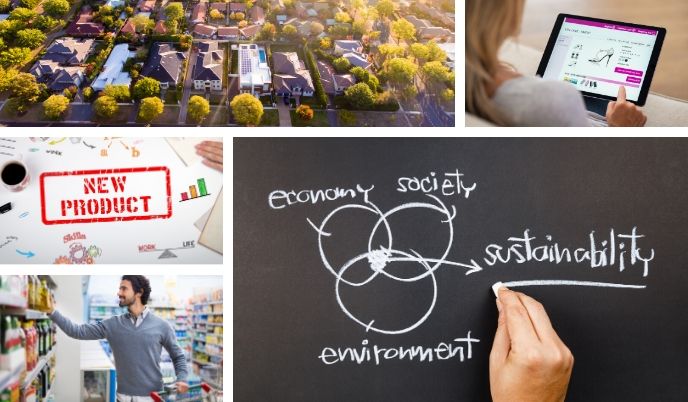The Next Normal of Consumer Behaviour McKinsey & Company predicted the “next normal” of consumer behaviours that will follow the COVID-19 crisis. We’ve summarized their top 10 predictions below:
1. Shifts in loyalty: baskets will evolve as consumers adapt to changes in availability, explore new health attributes, and try/retry brands.
Implications:
- Promote health & wellness brands. Introduce new products/services to meet increased consumer demand for health.
- Brands in non-essential categories experiencing purchase interruptions need to stay connected with their consumers and make plans to re-acquire as consumer confidence and mindset becomes more optimistic. This will also be an excellent opportunity to acquire new consumers.

2. Reset the price/value relationship: shift to lower price points and private label options in response to the economic downturn.
Implications:
- Reorganize product/service assortment and pricing to deliver against different price point tiers.
- Communicate how your brand is good value for money.

3. Home recast as the coffee shop, spa, restaurant, and more with ease and convenience: growth of DIY as consumers find more convenient and less expensive ways to “get the job done”.
Implications:
- Set home as a priority location for consumption growth. Offer home based DIY solutions.

4. Blending of demographic “norms”: Shifts in category and brands as more Millennials settle down and cook at home, and more men take responsibility for shopping.
Implications:
- Acquire Millennial consumers as they evolve to a more home-centric lifestyle.
- Understand the shopping attitudes and behaviours of men to inform merchandising and package design plans.

5. Return to center store and large brands: Familiarity and availability supported by large scale supply chains.
Implications:
- Signal brand leadership and generate consumer trust with ubiquitous distribution and supply continuity.
- Leverage consumers returning to center store and big brands as an opportunity to reset and re-vitalize legacy brands.

6. The e-Boomer: Channel bifurcation as online becomes the destination for stock up shopping and grocery/c-stores for fill-in and fresh trips.
Implications:
- Align product assortment and pack sizes to shopping trip types by channel.

7. High times for the lower end: Price and stable supply favour the dollar, discount, supercenter channels.
Implications:
- Align product assortment and pricing with retail channel priorities.
- Set dollar, discount and supercenter as priority channels for sales growth.

8. Re-luring to retail: Brick and mortar retail (ex. grocery) will require new approaches to get consumers back into their stores.
Implications:
- Reinvent the retail experience.

9. De-urbanization: The shelter at home experience leads to a reversal of the urban migration trend.
Implications:
- Prioritize suburban markets as sources of growth.

10. Sustainability remerging, redefined: Simultaneously striving to meet environmental and public health goal goals.
Implications:
- Strengthen corporate and brand delivery against sustainability and public health needs.

SOURCE: McKinsey & Company, COVID-19: Briefing Materials. April 3, 2020. FULL REPORT
By engaging your consumers now, you will possess the proprietary insights required to effectively reset your brand strategy for sustained growth in the post COVID-19 world. Want to win despite of COVID-19 connect with us at Johnchan@pearl-strategy.ca




